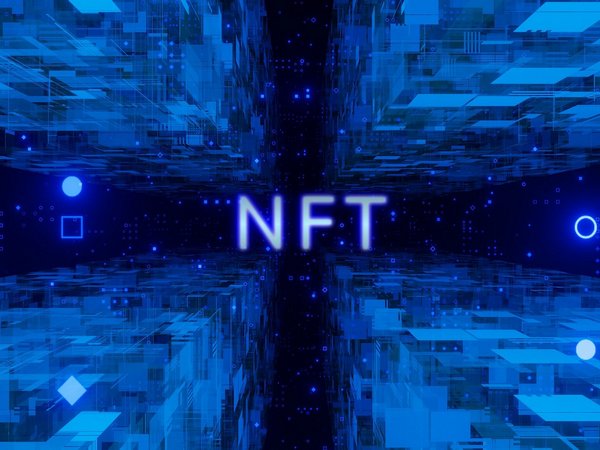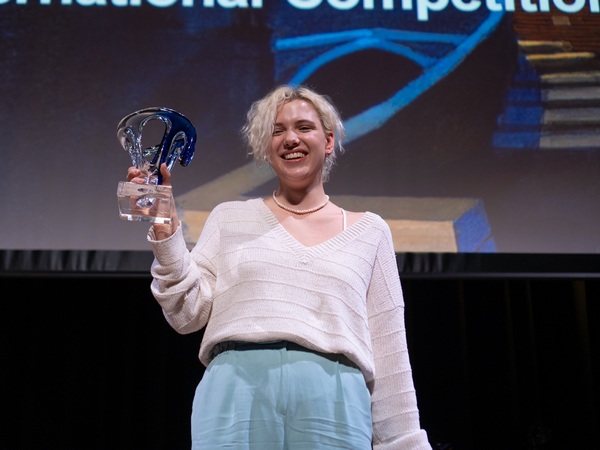What are NFTs (Non-Fungible Tokens)? Many people asked themselves that question upon hearing that Christie’s, the British auction house, sold an NFT associated with the digital artwork of artist Beeple (Michael Winkelmann) for 69 million dollars. Beeple holds the record of the highest auction price obtained by a living artist. During the last few months, the media have been giving a lot of visibility to this phenomenon which, despite not being new, is currently achieving a global dimension and a multibillion business. In order to better understand what these certificates of ownership for non-physical objects such as digital art, we have interviewed Alessandra Zanardo and Andrea Minto, professors of Commercial Law and authors of the book NFT-L’arte e il suo doppio (NFT - Art and its Double).
What are NFTs and in which fields can they be used?
In order to understand what NFTs are, we must first understand what a fungible token is — it is something that can be traded with something else that is the same type of thing. Fungible tokens are, for example, money, wheat, oil barrels, books published in multiple copies, and so forth. Non-fungible tokens, on the other hand, cannot be substituted with others of the same type. Non-fungible tokens are, for example, houses, diamonds, books that have been signed by the author.
Generally speaking, digital objects are intrinsically fungible, because they can be copied an infinite number of times. This has limited the expansion of digital art and of collecting objects made of BITs. Authenticating, certifying ownership, buying and selling such objects used to happen in an uncertain and unreliable territory. In 2017, Ethereum introduced a specific, open standard, ERC721, which allows for the creation of non-fungible tokens. We must liken an NFT to a contract, to a “smart” contract that implements a certificate of authenticity and ownership associated with a digital or physical object. This system allows to make purely digital objects unique or scarce, and therefore collectable.
NFTs, therefore, are digital codes connected with a digital good that can be inserted into a verification system called a “blockchain”, together with its data. The code is a series of numbers that uniquely identify that object — for example, a work of art — created with a shared standard. The NFT is a person’s declaration of ownership, supported by a certificate produced by the blockchain. Even though NFTs have become popular in the media especially because of digital art, there are many fields in which they can be used, such as gaming, intellectual property, real estate, self-sovereign identity documents, and financial documentation.
Have NFTs amplified a previously-existing way of understanding ownership, or have they established a new one?
I wouldn’t go as far as to state that NFTs are a new way of understanding ownership rights. NFTs are a response to the need to develop mechanisms that allow to apply the concept of uniqueness to the virtual world, thereby creating scarcity, and therefore increasing the economic value of a vast array of digital content which, unlike physical artistic production, is freely accessible online.
While first-generation cryptocurrencies obtained via mining, the sense of scarcity is conveyed through the mechanism of proof of work validation, which requires increasingly strong computation efforts, as well as the capping of the maximum number of minable coins, in the case of NFTs it is the generation platform that imposes a sense of scarcity by allowing for the creation of a limited number of multiple NFTs (a numbered series — as in the case of Rarible), or even — as in the case of Super Rare — for the creation of single NFTs.
We must remember that by purchasing a NFT connected with a work of art we are not purchasing the work of art, nor authorship rights, nor the exclusive right to reproduce or use that work of art. By purchasing an NFT, we purchase the right to state ownership of that object.
One of the main fields in which NFTs are used is digital art. We obviously cannot fail to mention the multimillion sale of the digital artist Beeple. What are the origins of this boom and the related huge profits? Is it a bubble that is going to burst?
I don’t think it’s a passing fad. Rather, it is the evolution of a deeply-rooted trend which is closely related to the success and increasing use of blockchains, bitcoins and cryptocurrencies, which started a long time ago in the USA and spread particularly quickly in Europe and in Italy in 2021, reaching incredible heights worldwide.
It is difficult to make predictions, but it is likely that the phenomenon will continue to grow, at least in the short and mit-term. All indicators seem to show a growing trend and digital art is only one of the “markets” in which NFTs can be used for various purposes — chiefly for collecting.
Some NFT critics regard this mechanism as something that will primarily be used for money laundering. Is this a real threat? What other risks may arise?
The threat is absolutely real — actually, this is the greatest risk, especially when we consider that the “physical” market of works of art has long been a prime place for money laundering. The European Commission has recently proposed a regulation of the data that accompanies the transfer of funds and for certain crypto-activities, and it has extended the regulations regarding traceability to prevent, find and investigate money laundering and the financing of terrorism.
There are also other legal issues regarding NFTs, which stem from a difficulty in establishing a legal framework for this phenomenon and from the fact that traditional norms cannot be applied to it. Consider, for example, consumer protection (which is not always adequate when someone purchases an NFT), as well as the payment of taxes (such as VAT) when NFTs are sold, and also the problem of counterfeiting intellectual property rights on the object involved. Another issue involves speculation. Some reasonable solutions can be proposed even without specific legislation, as we state in our book NFT. L’arte e il suo doppio.
NFTs in digital art
In order to appreciate the impact that this phenomenon has had on the art market — and, in a broader sense, on the concept of art — we interviewed Stefania De Vincentis, a researcher in Contemporary Art History at the Department of Humanities of Ca’ Foscari University of Venice, where she teaches Digital Iconography and Iconology Studies.
NFTs seem to indicate that digital art “becomes” art not simply because of its aesthetic value, but because of a legal certificate. Is this true?
Let me first state that my field of study is digital art, not NFTs in particular. Therefore, the thoughts I can share regard the way in which this phenomenon — which in some respects is still difficult to understand completely — is influencing the art market.
I don’t think this is true. NFTs are associated with a specific form of digital art, Crypto Art, which exists thanks to the cryptocurrency market. Not all Crypto Art has artistic potential. This is certainly an interesting field because NFTs have proven to be accelerators for artists to promote their work on the market. However, I don’t think there is a radical change. I don’t see a difference between buying one of these works of art and knowing you have purchased a limited edition photograph. Digital artists are simply taking advantage of a new mechanism, but they existed before. The fact that now digital artists are being given more space might hide the fact that they existed before. What I find interesting is conducting research on the artistic process — assuming it exists — behind these models, if there is some sort of artistic intention. NFT platforms that developed to host Crypto Art have opened up a new space for artistic production and comparison, in addition to a market for artists and creative people.
So there is no difference between buying a painting, a photograph, a sculpture or a work of digital art, which anyway is visible to anyone on the internet? Are buyers solely attracted to the possibility of saying “this is mine”?
As you’ve said, owning property or an NFT encrypted in blockchain is something that buyers find very attractive nowadays, but they used to do it before, with other forms of art. Obviously when you purchase a “physical” work of art you can do anything you want with it, but that is also true with digital art — even though digital art is visible online and can be copied with a screenshot, or even downloaded with low resolution, once it’s been bought it says that it belongs to the buyer. This has a certain value.
In my opinion, the digital aspect of art is very interesting, also because of the technical aspects that are involved in creating it. This, too, can be something of interest for buyers.
Some multi million sales made the headlines and there may be at least one of two reasons behind such purchases — the fact that NFTs are a fashionable trend and/or a sincere interest in the work of art. In fact, this phenomenon is part of a trend, especially when you consider the vastness of its media coverage. Moreover, some buyers might be sincerely interested in a work of art — it is not unusual. For example, the great art collector John Getty was assisted in his purchases by distinguished art history scholars, in order to avoid scams (which happened anyway). Collectors may also be interested in the digital exoskeleton with which these works of art are made and the blockchain system that characterises NFTs.
So have NFTs changed the way in which we define art, or have they extended it?
You are basically asking what art is — and this question is rooted in art history and aesthetics, and it is impossible to answer it now. However, I will say this: digital art associated with the NFT vector is a separate phenomenon in the world of art. It is definitely too early to tell whether it is are a passing fad or whether they NFTs will become an important part of our history.











